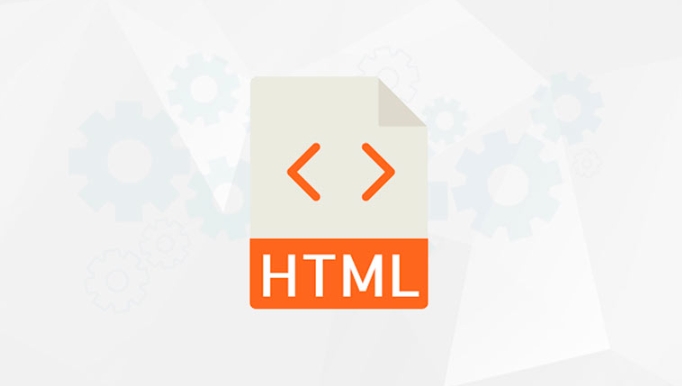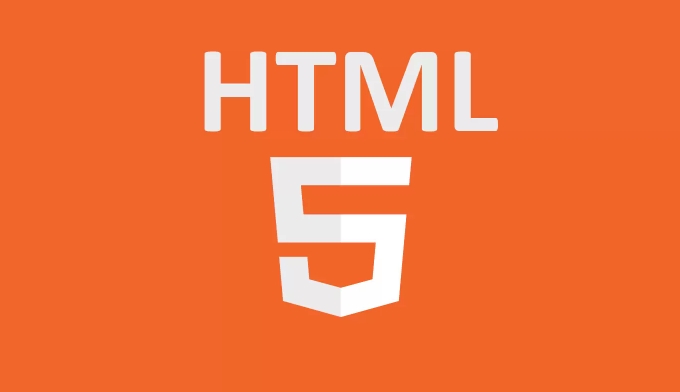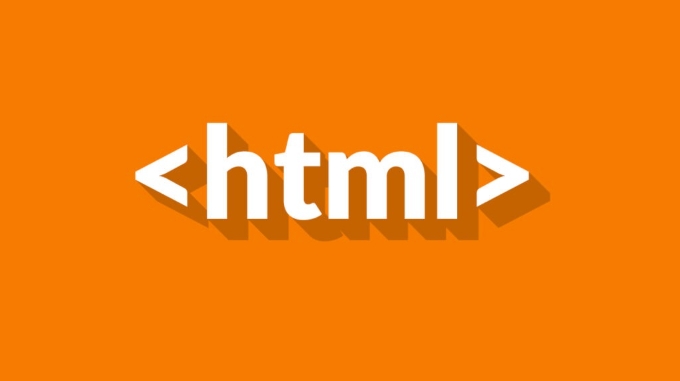The key to debugging HTML application browser developer tools is to master several core functions. 1. Use the "check" function to view the DOM structure to confirm whether the elements exist and whether the tags are nested correctly; 2. Edit HTML and CSS in real time, test the modification effect and check style conflicts; 3. Use the box model panel to check layout parameters such as margin, border, padding; 4. Set breakpoints or listen for DOM changes to track the dynamic modification of JavaScript. Proficient in using these methods can efficiently locate and solve common problems in HTML debugging.

Debugging HTML and using browser developer tools is actually quite straightforward. The key is to master several common functions and ideas. Mainstream browsers such as Chrome, Edge, or Firefox all come with developer tools (DevTools), which can help you quickly locate HTML structure problems, style conflicts, or reasons for not displaying elements.

View page structure and element status
The most common way to open DevTools is to right-click an element on the page and select "Inspect". This way you can immediately see the position of the corresponding HTML element in the DOM tree.
- You can expand and collapse the labels to see if the parent-child relationship is correct.
- Some elements may be dynamically removed or added by JavaScript, and the changes can be seen in the Elements panel.
- If an element is not displayed as expected, first confirm whether it really exists in the DOM, whether it is displayed: none or cut out by the parent element.
Sometimes the layout is inconsistent, just because a label is not closed or the wrong level is nested, so it is clear at a glance with DevTools.

Modify HTML and CSS test results in real time
Another powerful thing about DevTools is the ability to edit HTML and styles in real time, which is very useful for debugging.
- Double-click the HTML tag name to modify the tag type, such as changing the div to span.
- Modifying the class name and attribute value can take effect immediately.
- In the Styles panel, you can temporarily disable a CSS rule to see if it affects the layout or color, etc.
For example, if you find that the background color of the button is incorrect, you can cross out the style rules one by one in the Styles panel to find out which section of CSS is covering your settings.

Check the box model and layout performance of elements
On the right side of the Elements panel, there is usually a Box Model panel that displays the dimensions of margin, border, padding, and content of the currently selected element.
- If the layout doesn't look right, this view can help you quickly determine whether the padding is too big or the margin overlaps.
- The height or width of some elements is not extended as expected, so you can also see the specific values here.
- It is especially useful when debugging on mobile terminals. For example, if the box size changes under certain media queries, you can directly drag the device simulator to observe the changes.
Problems about dynamic modification of positioning scripts
If your HTML is dynamically generated or modified through JavaScript, sometimes the static code cannot see any problems, you have to use other functions of DevTools.
- Using the "breakpoint" function, find the JS file in the Sources panel, click the line number breakpoint, and when you execute that step, you can check whether the DOM is updated.
- Use the function of "listen to DOM changes": Right-click an element → Break on → subtree modifications. When the content of this element is modified by JS, the program will be paused to facilitate tracking of the source.
- For example, if you can't see a div on the page, but it is written in the source code, it may be that JS deleted it or replaced the content. In this case, you can use this function to capture the source.
Basically that's it. Although browser developer tools have many functions, for HTML debugging, mastering these core operations is enough. The key is to know which panel to go to to find clues when encountering problems, and don’t rely on guessing every time.
The above is the detailed content of Debugging HTML with Browser Developer Tools. For more information, please follow other related articles on the PHP Chinese website!

Hot AI Tools

Undress AI Tool
Undress images for free

Undresser.AI Undress
AI-powered app for creating realistic nude photos

AI Clothes Remover
Online AI tool for removing clothes from photos.

ArtGPT
AI image generator for creative art from text prompts.

Stock Market GPT
AI powered investment research for smarter decisions

Hot Article

Hot Tools

Notepad++7.3.1
Easy-to-use and free code editor

SublimeText3 Chinese version
Chinese version, very easy to use

Zend Studio 13.0.1
Powerful PHP integrated development environment

Dreamweaver CS6
Visual web development tools

SublimeText3 Mac version
God-level code editing software (SublimeText3)
 Implement vertical stacking of elements in Bootstrap Flexbox layout: from side to layer
Sep 21, 2025 pm 10:42 PM
Implement vertical stacking of elements in Bootstrap Flexbox layout: from side to layer
Sep 21, 2025 pm 10:42 PM
When using Bootstrap for web page layout, developers often encounter the problem of elements being displayed side by side rather than stacked vertically by default, especially when the parent container applies Flexbox layout. This article will explore this common layout challenge in depth and provide a solution: by adjusting the flex-direction attribute of the Flex container to column, using Bootstrap's flex-column tool class to achieve the correct vertical arrangement of H1 tags and content blocks such as forms, ensuring that the page structure meets expectations.
 Capture mousedown events with parent element containing cross-domain iframes: Principles and limitations
Sep 20, 2025 pm 11:00 PM
Capture mousedown events with parent element containing cross-domain iframes: Principles and limitations
Sep 20, 2025 pm 11:00 PM
This article explores the challenge of capturing mousedown events on parent divs containing cross-domain iframes. The core problem is that browser security policies (same-origin policy) prevent direct DOM event listening on cross-domain iframe content. This type of event capture cannot be achieved unless the iframe source domain name is controlled and CORS is configured. The article will explain these security mechanisms in detail and their limitations on event interactions and provide possible alternatives.
 How to add a tooltip on hover in html?
Sep 18, 2025 am 01:16 AM
How to add a tooltip on hover in html?
Sep 18, 2025 am 01:16 AM
UsethetitleattributeforsimpletooltipsorCSSforcustom-styledones.1.Addtitle="text"toanyelementfordefaulttooltips.2.Forstyledtooltips,wraptheelementinacontainer,use.tooltipand.tooltiptextclasseswithCSSpositioning,pseudo-elements,andvisibilityc
 How to make text wrap around an image in html?
Sep 21, 2025 am 04:02 AM
How to make text wrap around an image in html?
Sep 21, 2025 am 04:02 AM
UseCSSfloatpropertytowraptextaroundanimage:floatleftfortextontheright,floatrightfortextontheleft,addmarginforspacing,andclearfloatstopreventlayoutissues.
 How to set the lang attribute in HTML
Sep 21, 2025 am 02:34 AM
How to set the lang attribute in HTML
Sep 21, 2025 am 02:34 AM
Setthelangattributeinthehtmltagtospecifypagelanguage,e.g.,forEnglish;2.UseISOcodeslike"es"forSpanishor"fr"forFrench;3.Includeregionalvariantswithcountrycodeslike"en-US"or"zh-CN";4.Applylangtospecificelementswhe
 JavaScript external function call difficulty analysis: script location and naming specification
Sep 20, 2025 pm 10:09 PM
JavaScript external function call difficulty analysis: script location and naming specification
Sep 20, 2025 pm 10:09 PM
This article explores two common problems when calling external JavaScript functions in HTML: improper script loading time causes DOM elements to be unready, and function naming may conflict with browser built-in events or keywords. The article provides detailed solutions, including tweaking script reference locations and following good function naming specifications to ensure JavaScript code is executed correctly.
 What is the difference between object and embed tags in html?
Sep 23, 2025 am 01:54 AM
What is the difference between object and embed tags in html?
Sep 23, 2025 am 01:54 AM
Theobjecttagispreferredforembeddingexternalcontentduetoitsversatility,fallbacksupport,andstandardscompliance,whileembedissimplerbutlacksfallbackandparameteroptions,makingitsuitableonlyforbasicusecases.
 How to create a multi-select dropdown in html?
Sep 21, 2025 am 03:39 AM
How to create a multi-select dropdown in html?
Sep 21, 2025 am 03:39 AM
Use the select element to add multiple attributes to create a multi-select drop-down box. The user presses the Ctrl or Shift key to select multiple options, displays multiple lines through the size attribute, and submits the selected value in conjunction with the name attribute array format.




